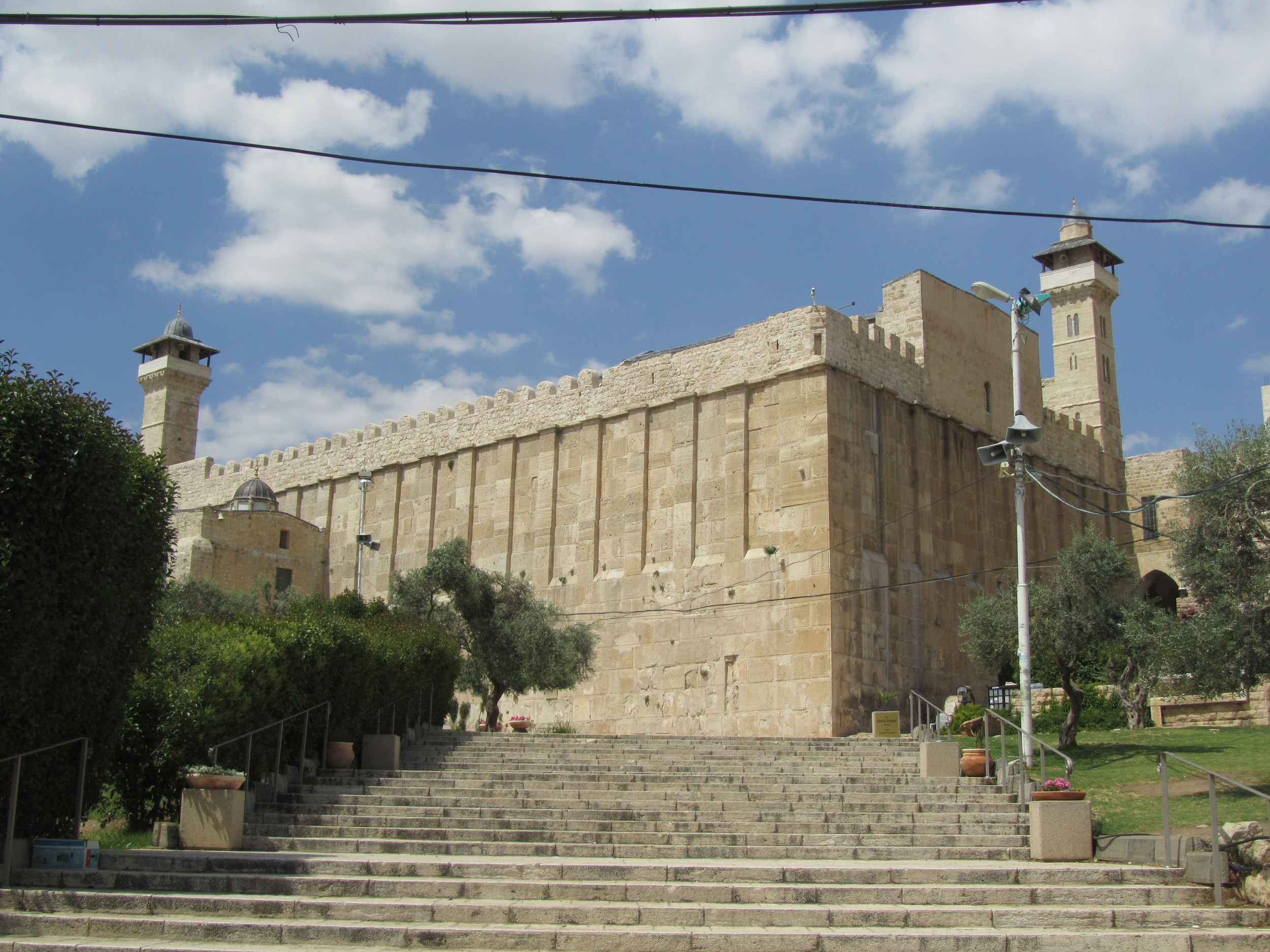As the members of our group of pilgrims were either getting settled in or en route to the Old City of Jerusalem, Pam and I set our with our dear friends Malcolm and Cheryl Potts to explore the Judean hill country south of Jerusalem. Our first challenge of the day was a malfunctioning security code in the rental car which set us back about 45 minutes, but once that was sorted out we headed to a small village in the Palestinian Territory south of Bethlehem to visit the so-called "Solomon's Pools." In the Holy Land anything old and impressive is usually attributed to Solomon at some point whether or not he had anything to do with it!
Massive Water Storage Pool Built by Herod the Great
In fact these massive pools were built by Herod the Great as part of his ingenious plan to supply water to the growing population of Jerusalem. Since there is only one spring to supply water in the Holy City, Herod's engineers built these water storage pools which were fed by local springs and then the water was directed to Jerusalem some 14 miles away via elaborate aqueducts spanning the hilly territory. After visiting the pools and exploring the aqueducts we enjoyed a classic Middle Eastern lunch in a huge, but empty shopping center built across from the pools, a sad testimony to the economic deprivation of the Palestinian Territories.
From there we headed further south to the ancient town of Hebron, where Abraham and Sarah made their home by the Oaks of Mamre. It was here that Abraham purchesed a plot of land that included the Cave of Machpelah, his future burial site. Ultimately his wife Sarah and his grandson Jacob were buried there and possibly the other patriarchs and matriarchs such as Isaac, Rebecca, Leah and Joseph. In ancient times the Cave of Machpelah was revered as the tomb of the patriarchs and Herod the Great built a magnificent edifice of massive cut stones surrounding it. It is of special interest because it mimics nearly exactly the design of the massive retaining walls surround Herod's Temple Mount.
The Tomb of the Patriarchs, The Cave of Machpelah
Hebron is particularly tense these days because both the Muslims and the Jews lay claim to the Cave of Machpelah as a holy site. Over the centuries each community has laid claim to different parts of the enclosure and partitioned it off from the rest. The result is that the spacious, open air shrine that Herod built has become a compartmentalized maze of religious territorialism. Since it was Shabbat, the Jewish day of rest, we were not allowed to enter the Jewish side so only got to visit the Muslim side. While were visiting the mosque a young Muslim man told us the tragic story of a madman who killed 29 people there in 1994.
Inside the Cave of the Patriarchs in Hebron
From Hebron we drove north to Wadi Kelt, the deep ravine that runs from Jericho into the Judean dessert. It is the route follwed by the Roman road from Jerusalem and the setting for Jesus' parable of the Good Samaritan. There is an ancient spring there which Herod the Great utilized to bring water to his palace in Jericho. Since this is the area where Jesus spent forty days fasting in the desert and this spring is the only water source for many miles in every direction, it is almost certain that Jesus spent his time of temptation in the area of this spring and came here for water.
The Spring in Wadi Kelt
We decided to drive down a very steep and deeply rutted road that drops into the wadi and discovered that it leads down near the spring! After a 15 minute hike I discovered this amazing little oasis in the midst of the harsh desert, a reminder of how the Father provides for us in our times of testing and temptation. A flock of sheep blocked my way on the return hike and I had to wade through my new wolly friends to get back to the car!
Desert Sheep on the Trail to the Wadi Kelt Spring
That evening the final member of our group arrived and we enjoyed our first dinner together as we officially began our The Footsteps of Jesus Experience! After dinner we took an evening stroll down to the Western Wall and joined the various Jewish worshipers by praying at the massive stones of the ancient retaining wall of Herod's Temple Mount. The spiritual adventure has begun ... thanks for joining us!





